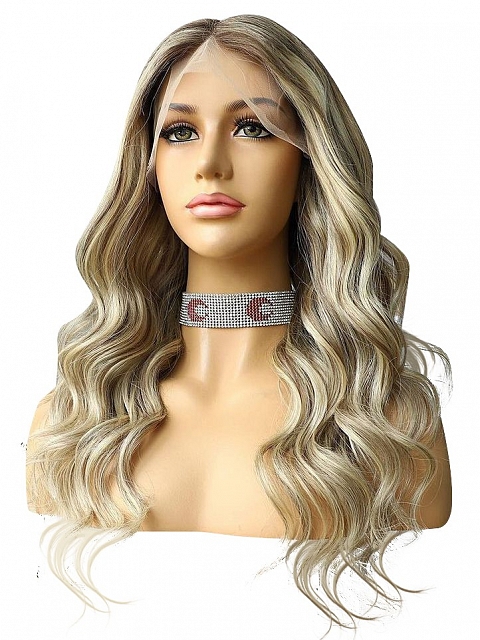Background Intro
If you or someone you know is undergoing chemotherapy, hair loss can be a tough side effect to handle. Hair is important to many people and losing it can feel like losing a part of oneself.
In this post, we will discuss why chemotherapy causes hair loss and provide tips for managing it. We'll cover things like scalp cooling and alternative hair options, so you can feel more at ease during this challenging time. Whether you're going through chemotherapy or just want to learn more about it, this blog post has valuable information that can help.
What is the relationship between chemo and hair loss?

Chemotherapy, commonly referred to as "chemo," is a treatment that is widely applied to deal with cancer. This therapy is able to stop cancer cells from developing, dividing and spreading. Although this method is very effective, there are some common side effects that can occur. Hair loss is one of the most common symptoms. After your first chemotherapy treatment, you may experience hair thinning or hair loss. The vast majority of cancer patients will regrow new hair after the last treatment. However, your hair may not be as dense as before and the texture may become fine and prone to breakage.
Related: Hair Loss In Women: What Causes It And How To Solve It
What kind of hair loss does chemo cause?
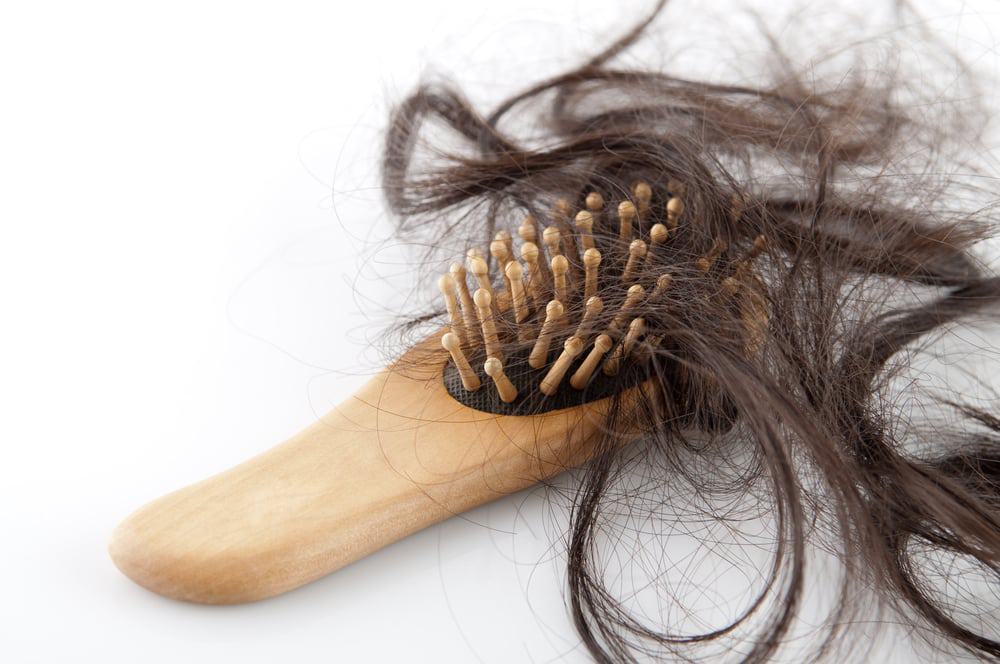
During the anagen phase, hair follicles in all parts of our body (including the head) are continuously active under normal circumstances. During chemotherapy the drug enters our body to participate in the blood cycle in order to destroy any cancer cells. Due to the powerful killing power of chemotherapy, some of the normal cells will also suffer death. Therefore, chemotherapy is likely to destroy the hair follicles, resulting in the inability to grow hair in the anagen phase. This type of hair loss is called "alopecia areata". Also, you may notice that not only hair is lost, but also body hair from other parts of the body, including eyebrows and eyelashes, armpit hair and leg hair.
When does hair loss from chemo begin?
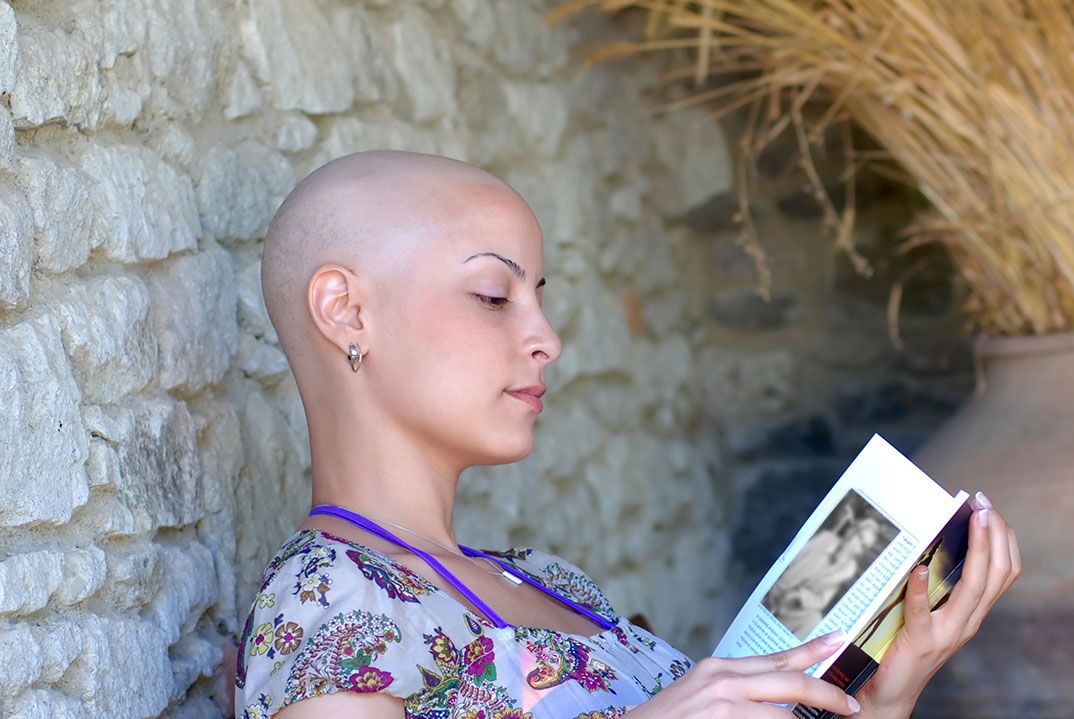
The onset of hair loss is not fixed, and when it happens is different for each patient. Usually, the symptoms of hair loss occur very quickly. Chemotherapy directly disrupts the hair growth cycle, so hair may begin to fall out immediately during chemotherapy. On average, people with cancer experience mild hair loss within a few days to a few weeks after a course of treatment. This is followed by two to three months of extensive hair loss until complete hair loss occurs. This symptom is not noticeable at first. However, as time accumulates hair loss will become more severe. At the same time, you may feel some discomfort: itching, tingling or redness of the scalp.
When does hair grow back after chemo?
The duration of hair loss varies from person to person. Typically, when you finish chemotherapy, your hair will begin to grow within a few weeks. The hair follicles will return to their normal cyclic cycle and become active again. Subsequently, hair growth will become more pronounced over a period of three to six months. Of course, some people will also regrow hair before the treatment is complete. During the initial growth phase, the hair is very soft. As time goes on, the new hair will gradually become thicker. If you want your hair to be thick and healthy, you need to develop a comprehensive maintenance program for it. Some chemotherapy treatments (such as cyclophosphamide) may cause permanent hair loss.
Timeline of hair growth after chemotherapy:
- 2-3 weeks after Chemo: Light, soft, and frizzy hair starts to grow
- 1-2 months after Chemo: Growth of thicker hair begins
- 2-3 months after Chemo: Hair grows around one inch
- 3-6 months after Chemo: Hair grows around two to three inches
- 6-12 months after Chemo: You can see substantial hair growth
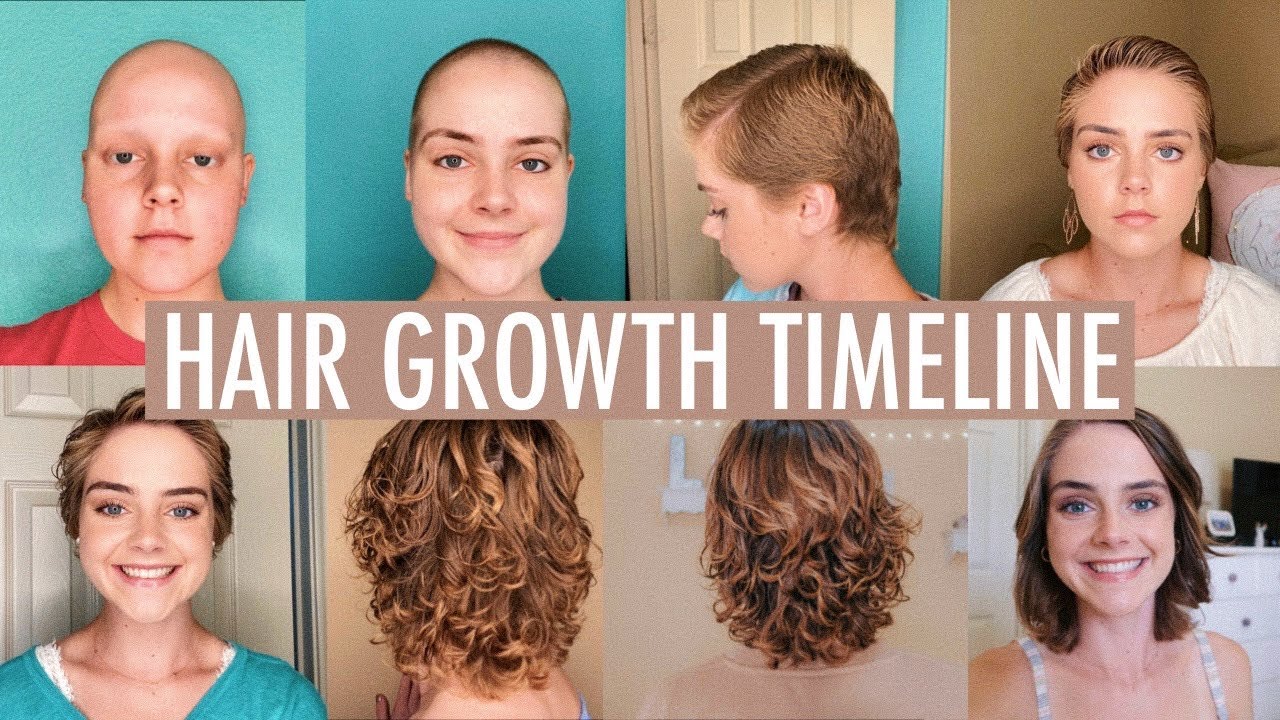
Why does chemo cause hair loss?
The main reason is the effect of the drug. Chemotherapy drugs destroy the genetic material (DNA,RNA) inside cells and interfere with cell division. Unfortunately, these drugs cannot distinguish between normal cells and cancer cells that are dividing rapidly, so they can also damage healthy cells. The drugs can quickly reach the hair follicles through the bloodstream, thus affecting hair growth. Hair loss may depend on which chemotherapy drug is used, as well as the timing, dose and route of administration.
#1 The type of chemotherapy drug

- Alkylating agent. These drugs are used to treat leukemia, lymphoma, and cancers of the brain, lung, breast, and ovary. Alkylating agents absorb the hydrogen atoms in the DNA, causing the cancer cells to be unable to repair themselves. Agents that are more likely to cause hair loss include Cytoxan (cyclophosphamide), Ifex (ifosfamide) and Busulfex (busulphan).
- Antimetabolites. This drug is used to treat leukemia, cancers of the breast, ovaries and intestines. Antimetabolites are able to replace natural metabolites, thus affecting the synthesis of nucleic acids. These chemotherapy drugs are less likely to cause hair loss than other drugs, but some thinning of the hair may occur.
- Anti-tumor antibiotics. This drug is used to treat soft tissue sarcoma, neuroblastoma, lung cancer, breast cancer and esophageal cancer. Anti-tumor antibiotics invade the inside of cancer cells and prevent them from growing by modifying their genetic code. Not all anti-tumor antibiotics cause hair loss. Among them, Adriamycin (doxorubicin) and Idarubicin are more likely to cause hair loss.
- Topoisomerase inhibitors. This drug is used to treat leukemia, lung cancer, ovarian cancer, and gastrointestinal tract cancer. Topoisomerase inhibitors make ligation of the cell cycle impossible, causing DNA strands to break, thus killing cancer cells. In this group, hair loss is more common with VePesid (etoposide) and irinotecan.
- Mitosis inhibitors. This drug is used to treat myeloma, lymphoma, leukemia, breast cancer, lung cancer, and prostate cancer. Mitotic inhibitors hinder the assembly of microtubulin and inhibit its disassembly into microtubule polymers. These drugs are more likely to cause hair loss. They include Taxol, Ellence, Ixempra, and Vincasar.
#2 The amount of the drug
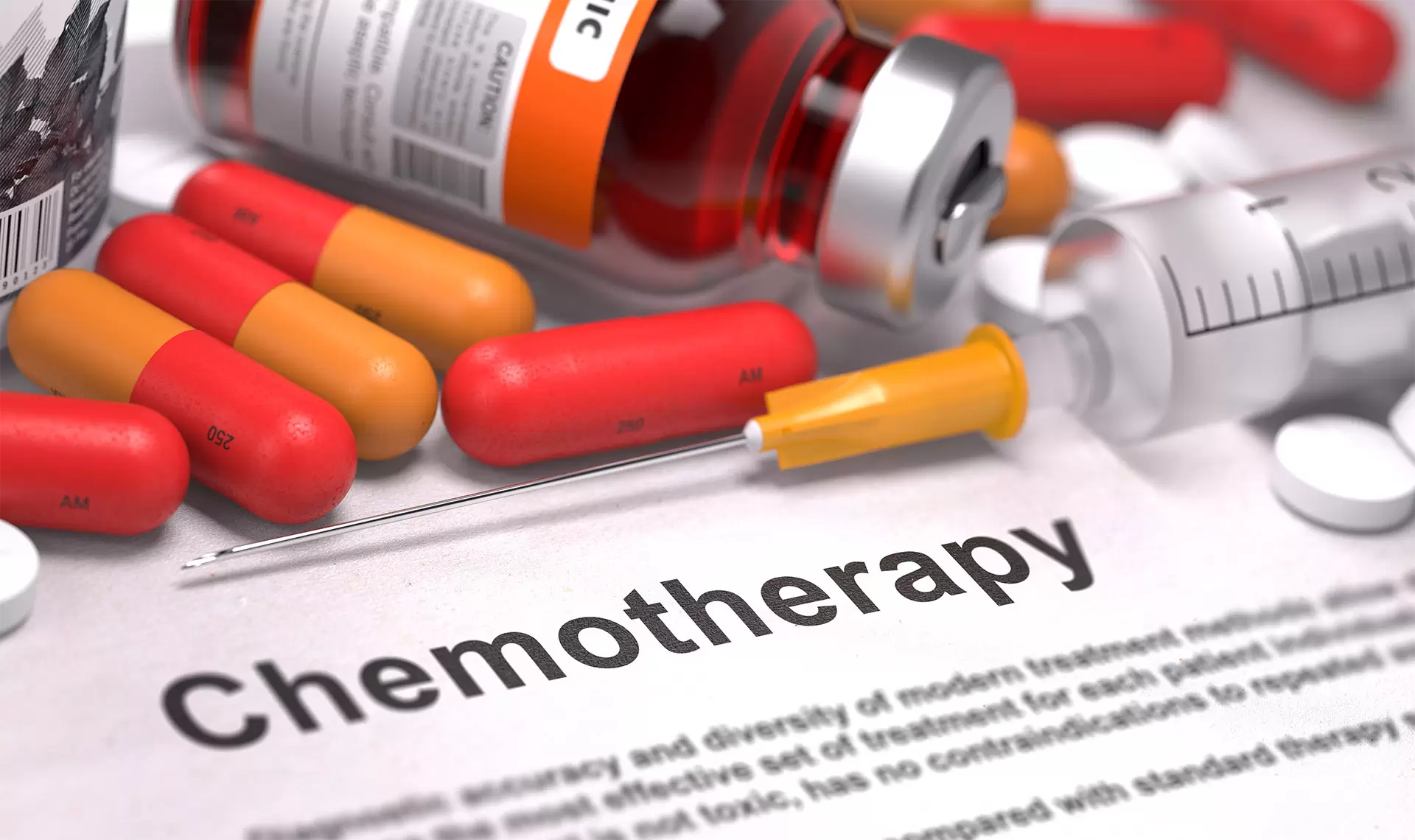
Generally speaking, the higher the dose given, the greater the risk of hair loss. Accumulated medications can keep stimulating the hair follicles and disrupting the hair growth cycle. Therefore, early-stage cancers require fewer courses of treatment and are less likely to result in hair loss. If the cancer has reached an advanced stage, the cancer patient has to undergo multiple chemotherapy sessions in order to enhance the treatment to keep him alive. As a result, the number of drugs grows and the likelihood of hair loss becomes high. Patients with advanced cancer often experience complete hair loss.
#3 The regimen of chemotherapy

Sometimes treating a type of cancer with chemotherapy requires a combination of drugs. Using one drug alone may only cause very mild hair loss, and may not even cause symptoms of hair loss. Unfortunately, a single drug cannot treat all types of cancer at this time, and some difficult conditions must be treated with a combination of several drugs to have a chance of successful remission. Therefore, your doctor will advise cancer patients to use different drugs to develop your own chemotherapy regimen based on your individual medical condition and medical history. Receiving multiple drugs in combination can also make hair loss worse.
#4 The way the drug is administered

Intravenous (IV) injections insert a needle or tube into a vein, from which the drug is supplied and the infusion is completed. This type of administration allows the drug or fluid to enter your bloodstream immediately. Once the drug enters the bloodstream, it walks throughout the body and therefore inevitably enters the hair follicles and kills the cells. This can then cause hair loss. However, in most cases, the ingredients of an oral medication do not enter the bloodstream until they reach the stomach or intestines. Sometimes, the drug is absorbed by the lining of the mouth, as in the case of lozenges. This means that much less of the drug enters the bloodstream as an oral dose than as an intravenous dose. Therefore, patients who receive intravenous injections have a greater chance of hair loss than those who take them orally.
#5 Variation in effects
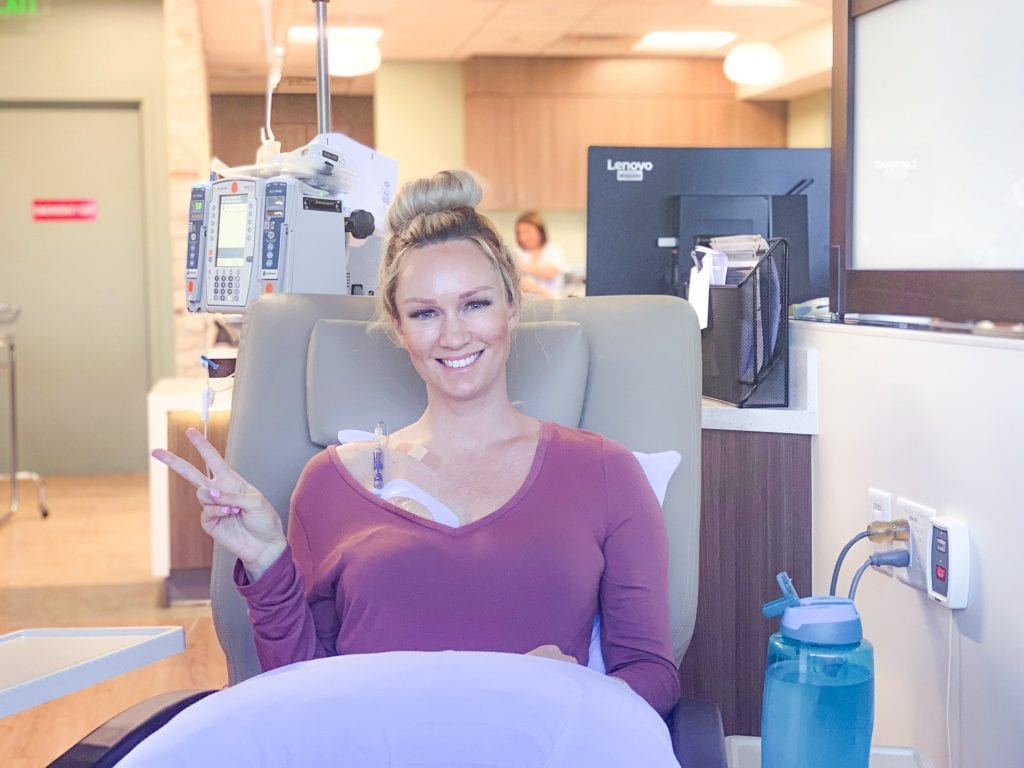
Because chemotherapy still has many shortcomings, medical experts have developed many new drugs. These drugs are more specific to cancer cells and can more accurately distinguish between cancer cells and normal cells, thus avoiding inadvertent injury. The new chemotherapy drugs gradually reduce the side effects on the human body, reduce the chance of symptom attacks, are more practical and have better anti-cancer effects. Hence, there is some possibility that they will not cause hair loss.
#6 Individual susceptibility
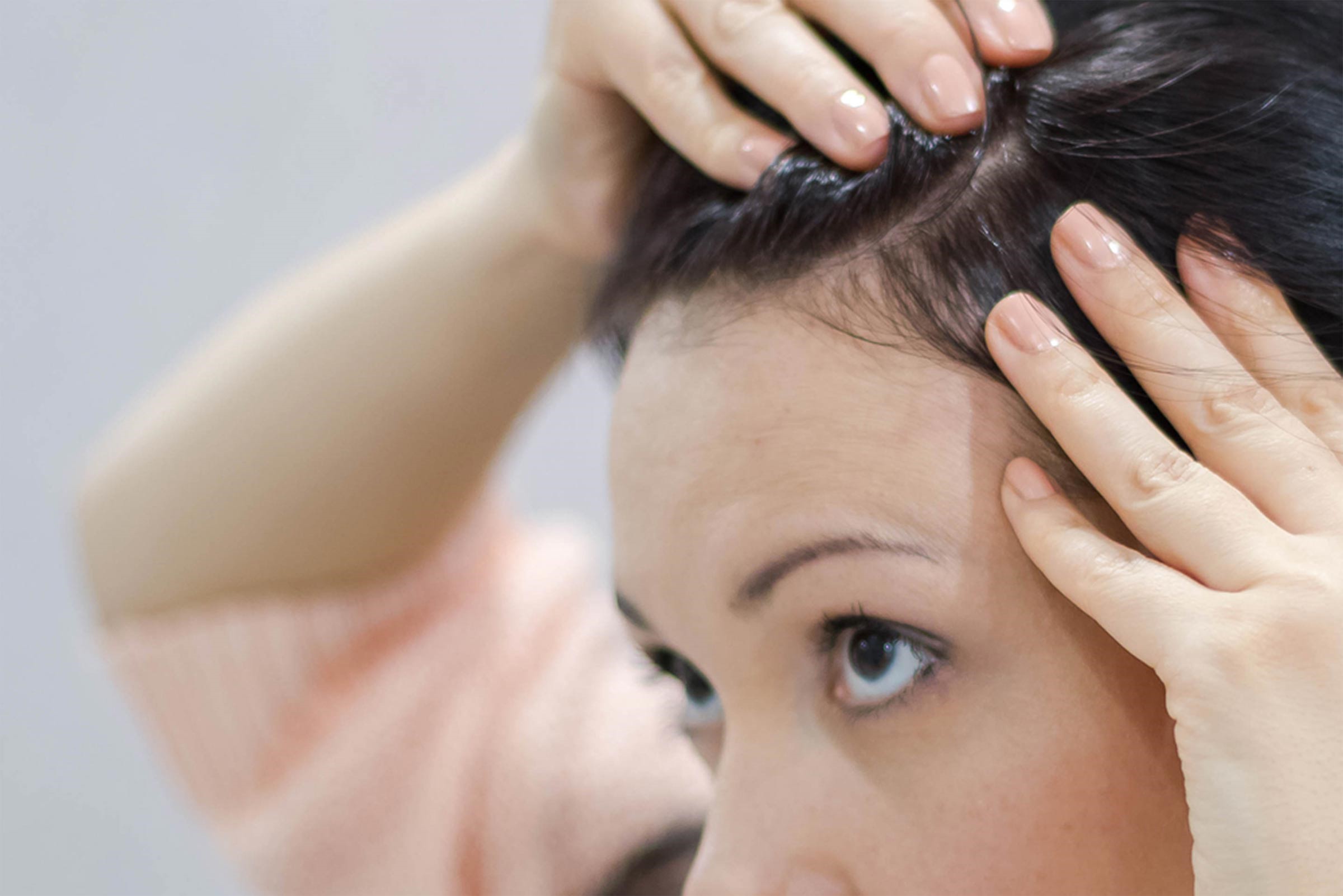
Each person has a different degree of absorption and sensitivity to drugs. The effect of the same drug and the same dose will be variable in different patients. This is related to age, gender, physical condition, immune system, and skin type. For example, older patients may be more susceptible to hair loss than younger patients, and people who are frail are more susceptible to hair loss than those who are healthy. People who are more sensitive to medications are also at greater risk of hair loss. If you have a sensitive scalp, you're likely to experience hair loss and have it be severe.
How to manage chemo-induced hair loss?
Pre-chemo management
#1 Treat your hair gently
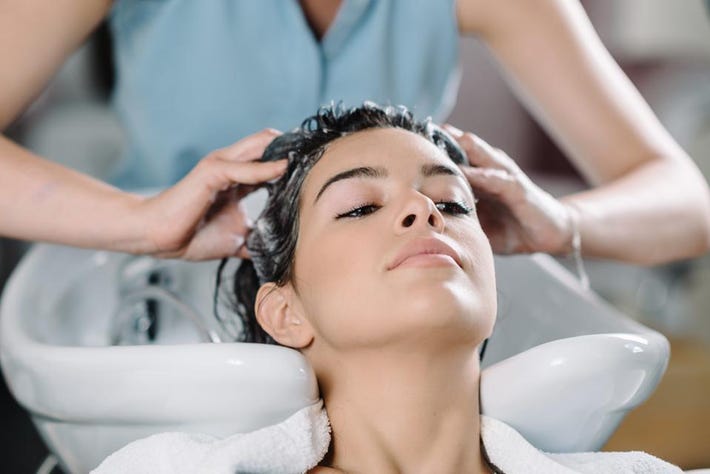
Be kind to your hair and avoid coloring, perming and bleaching or your hair will be severely damaged. As a general rule, you should shampoo your hair no more than twice in a week to protect your scalp. If you can, let your hair dry naturally after washing, as heated devices (such as curling irons and straighteners) tend to dry out your hair. It is best not to brush and pull your hair too often and to reduce the number of times you have to style your hair. Before chemotherapy, you need to do your best to strengthen your hair, which will help reduce the risk and severity of hair loss.
#2 Choose a gentle hair care product

Many functional shampoos have a variety of harsh chemicals added as well as fragrances that regulate odor. These shampoos can cause the scalp to lose moisture and become dry. So, be careful to choose shampoos with natural ingredients. Some conditioners contain more essential oils and moisturizers, which tend to make hair greasy and lacking in elasticity. Therefore, we recommend using a conditioner with simple ingredients when you By properly simplifying the steps and products used to cleanse and condition your hair, you can effectively protect the health of your scalp and hair.
#3 Get your hair cut or shaved
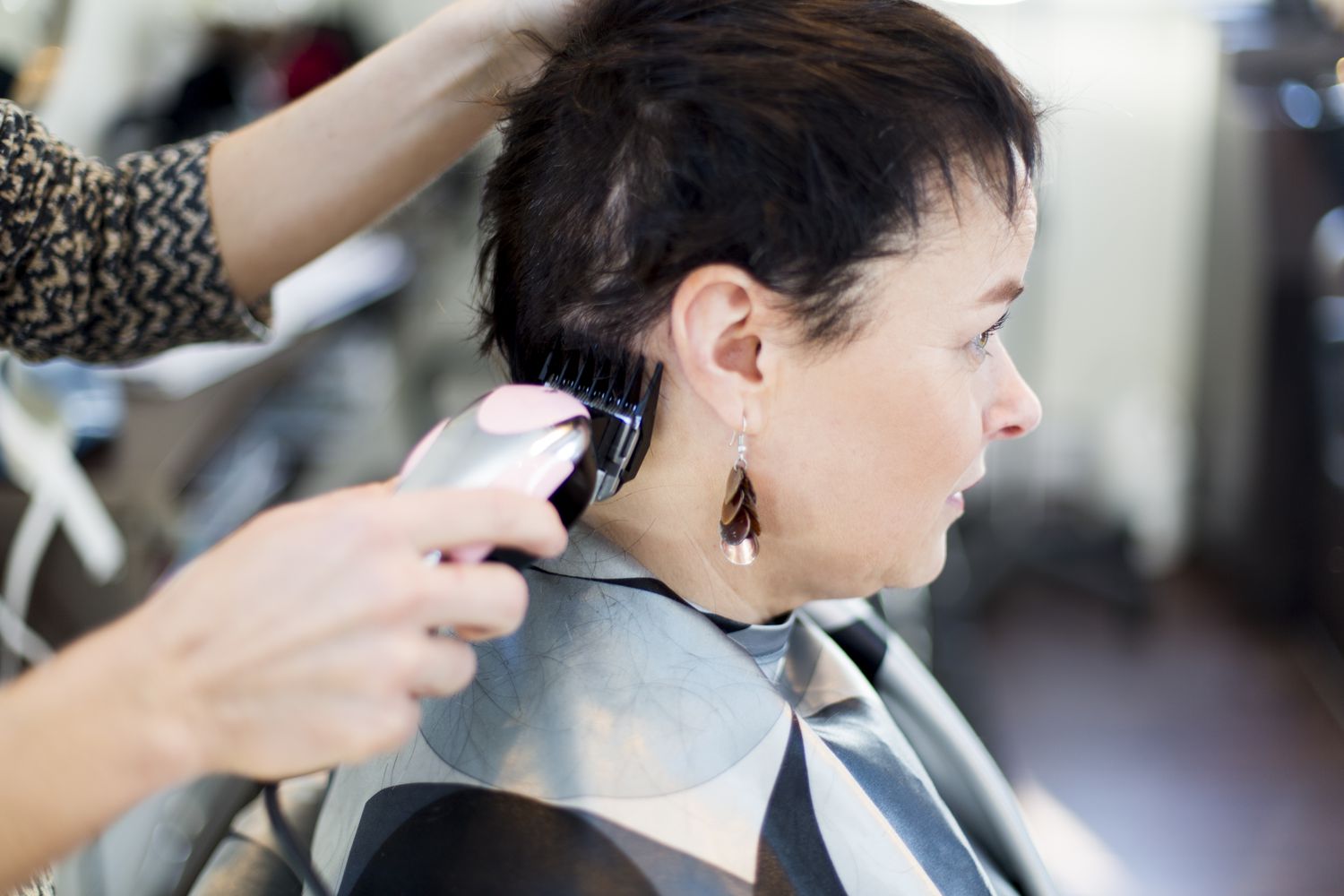
Compared to long hair, short hair appears more voluminous and fuller. It also has the ability to somewhat flatter the shape of the face. If you need to undergo chemotherapy, consider cutting your hair short on a regular basis during the preparation phase so that you can get used to a different version of yourself in advance. That way, when you start to lose your hair, you will find that the changes are not really noticeable and therefore be able to slowly accept the situation in the moment. In fact, many cancer patients shave off all their hair before chemotherapy. They hold the realization that hair loss is something they have to deal with. Since the odds of it happening are high, it is better to take the opportunity to manage your hair and be open to reality.
#4 Scalp cooling

Scalp cooling. Scalp cooling can reduce the risk of chemotherapy-induced hair loss. This practice can prevent some chemotherapy drugs from reaching the hair follicles. However, not all chemotherapy drugs will be hindered, and it is uncertain whether the outcome of treatment will be positive. Scalp cooling needs to be implemented before, during and after chemotherapy. There are two ways to perform scalp cooling. One, cold caps. These caps are special and are filled with cold gel. Second, the refrigerated cooling system. It works by pumping a liquid coolant away from the cap. During the treatment, you may feel a little cold, but don't worry, this feeling won't last long. To protect your hair, you can ask in advance if the hospital has a scalp cooling facility.
#5 Prepare hair coverings
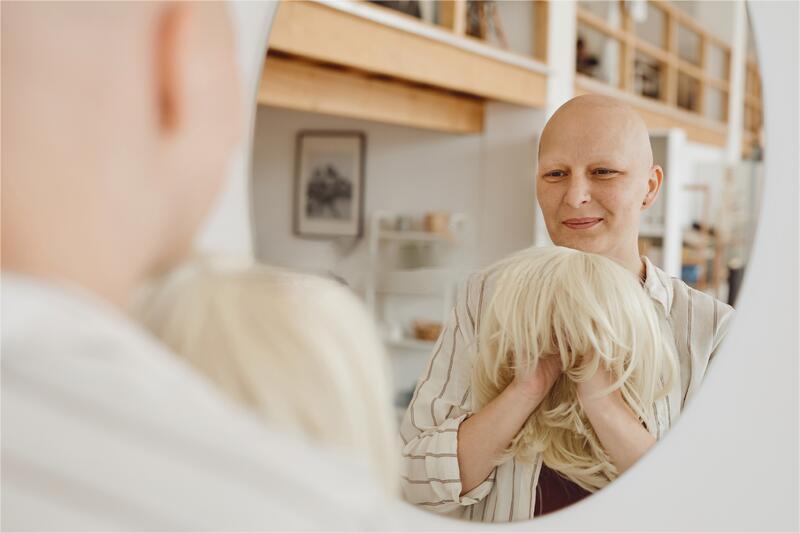
Prepare hair coverings. If you don't want to appear as a bald person, you can start picking out wigs, toppers, headscarves and other hair coverings that will work for you. You can also consult your doctor and ask them to give you advice based on your face shape and facial features.
- Wigs. Wigs that use human hair are easier to style, cut, and dye. However, these wigs usually require more maintenance than synthetic hair. Synthetic hair is usually more durable. Generally, human hair will be more expensive than other types of materials. If you are looking for a realistic look, a human hair wig will be your best choice. If you are more keen on the shine and cost effectiveness of your hair, you can never go wrong with synthetic hair. You should consider your budgets and which type of wig you require before looking at wigs to purchase. We've selected some pretty wigs for chemo-induced hair loss, so take a look.
- Toppers. During chemotherapy, your hair may not fall out completely. If you want your head to bear less weight, you can choose a hair topper instead of a wig. They can provide coverage of specific areas and you can just cover the top of your head. Toppers look very natural, are well hidden and are not visible to anyone. There are many types of bases for hair toppers, like mono base, silk base and lace base. You can always find the one you are comfortable with. Of course, you can also customize a topper by specifying your preferred hair color, length, density, base type and size, and other requirements. We will do our best to accommodate you.
Related: How To Choose Your First Human Hair Wig?
From Clip-Ins To Integration: A Comprehensive Guide To Different Types Of Hair Toppers
► Other suggestions
1. Before chemotherapy, maintain a nutritious and balanced diet to help your body better cope with the effects of the drugs.
2. Learn about eyebrow tattoos and false eyelashes. If your eyebrows have fallen out, ask a beauty salon to make custom eyebrows for you. If you find that your eyelashes are becoming sparse, false eyelashes may be able to ease your concerns and are available in online stores.
3. Try other headwear and wig alternatives, such as headbands and hats. They can also be used as an alternative to wigs or toppers.
4. Seek support from others who have experience with hair loss. You can join our hair loss community. Finding a good hair loss community and reliable information can make all the difference in a journey with hair loss. Follow@Wigshe, where you will find information, personal stories, and products to help you through the difficult times. We hope you are inspired.
5. Decide whether to donate your hair.
6. Build up your mind and face hair loss head on.
Intra-chemo management
#1 Pamper your rest hair
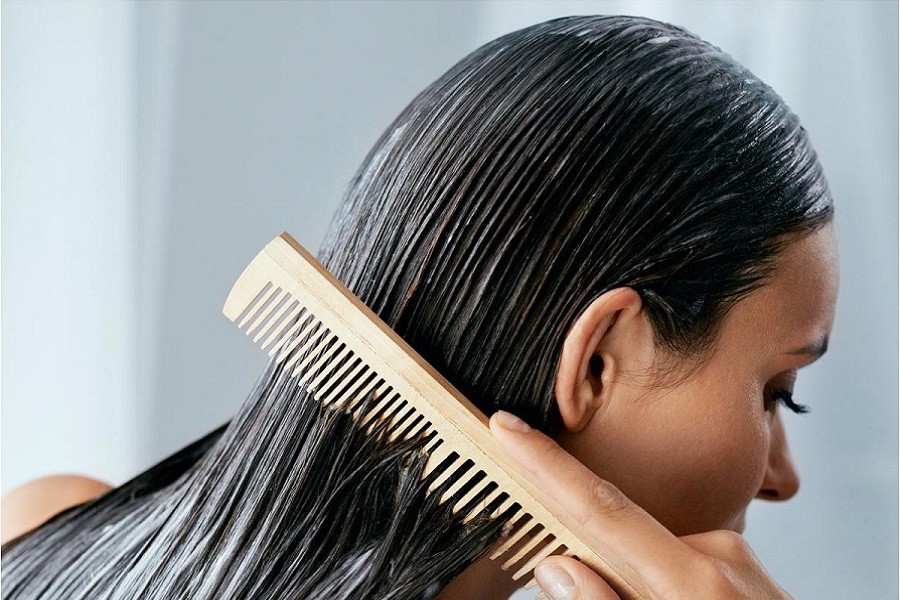
During chemotherapy, you need to insist on taking care of your hair every day without neglect. You should not wash your hair too often; we recommend that you wash your hair every two to four days, taking care to control the temperature of the water. Use shampoos and conditioners with mild ingredients to prevent irritation of the hair follicles. If you have long hair, use conditioner only on the middle and ends of your hair. Rinse your hair and scalp thoroughly with warm water and pat dry with a soft towel. After air-drying, gently brush or comb your hair with a soft bristle brush or wide tooth comb. Start brushing or combing your hair from the tips and gently work your way up to the scalp. You can also use your fingers to comb through your hair. Wet your fingers with water first.
Related: How To Create The Flawless Hair Care Regimen For Your Hair Type?
#2 Protect your scalp
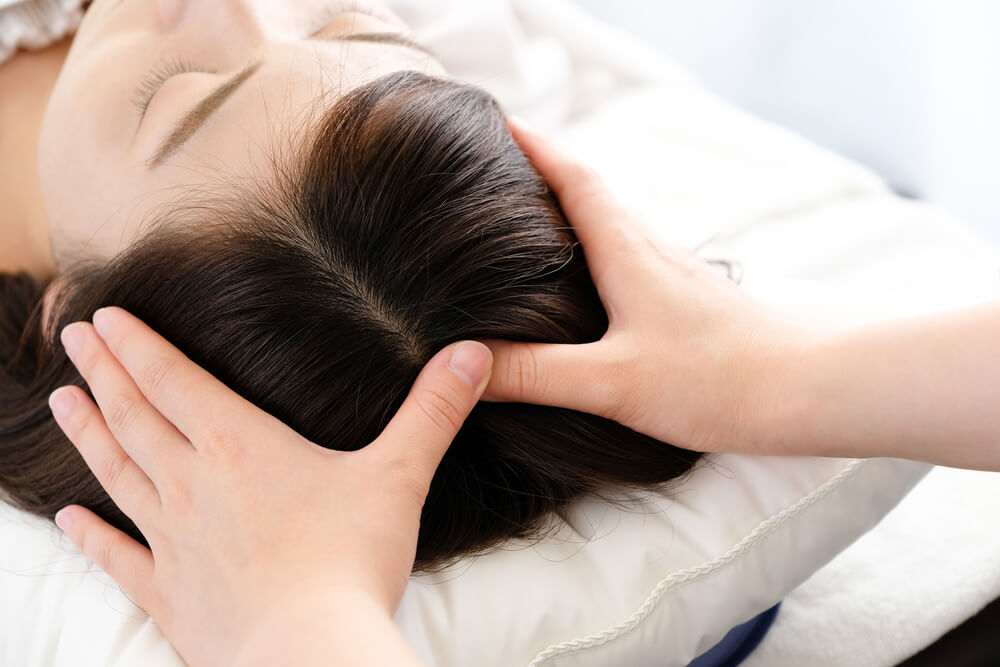
While undergoing chemotherapy, your scalp can become very sensitive, so physical protection is needed. In the summer, you will need to cover your head and avoid exposing your scalp to the sun. You can apply a little sunscreen. In winter, you will need to hide your head with a wig, hair topper, hat or scarf to keep it warm and prevent the cold air from irritating your scalp. For bedding, you should choose natural fiber pillowcases or sleep caps like silk, as they are smoother than other materials and help reduce hair tangles.
Related: Why You Should Wear A Sleep Cap And How To Pick The Right One?
► Other advice
Do not braid your hair (including ponytails) during treatment. Do not use the following on your hair as they may be too harsh or pull your hair
1. Hairspray, hair dye, bleach or permanents (perms)
2. Clips, bobby pins, barrettes, ponytail holders or hair ties (scrunchies).
3. Heat tools.
4. rubber shower cap or swim cap.
Avoid soaps, deodorants or perfumes if you are undergoing radiation therapy.
Post-chemo management
#1 Medications
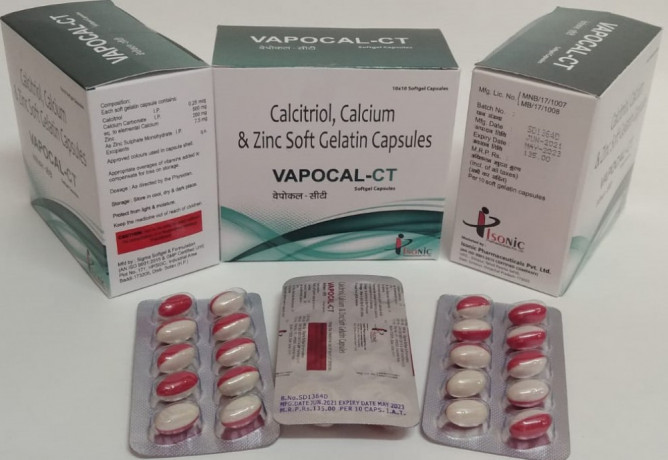
1. Minoxidil. Studies have shown that 2% topical minoxidil helps with rapid hair growth after chemotherapy. It blocks the synthesis of collagen, inhibits its production and induces endothelial growth factor (VEGF) in blood vessels. Experts suggest that minoxidil not only prolongs the anagen phase, but also makes shrunken hair follicles larger. It facilitates to reduce the severity of hair loss and shorten the duration of hair loss.
2. Antioxidants. This drug can also be useful in the post-chemotherapy period. N-acetylcysteine, an analogue of glutathione, has been shown to protect the body from cyclophosphamide CIA and doxorubicin CIA.
3. Calcitriol (1,25-dihydroxyvitamin D3).
Another agent that contributes to hair regrowth is calcitriol, which interferes with DNA synthesis; inhibits Ki67 expression; and impedes the growth of many other cell types. Contact dermatitis has been detected in association with 1,25-dihydroxyvitamin D3, so it is important to use these drugs as prescribed, especially when administered topically.
#2 Vitamins

- Biotin or vitamin B7. This vitamin is often thought to be strongly associated with healthy hair, nails and skin. Taking biotin or vitamin B7 after chemotherapy may be able to accelerate hair growth, but no clear evidence has yet emerged to confirm this. You can get biotin from eggs, seafood, whole grain cereals, and dark green leafy vegetables.
- Vitamin A. Vitamin A is widely used to improve skin. It enables more active sebum production and speeds up metabolism to maintain healthy skin. The scalp also needs sebum to counteract dryness, and vitamin A is beneficial in protecting the scalp and promoting hair growth. It is important to note that too much vitamin A can also cause hair loss. Therefore, it is more important to have a dietary source as opposed to a large number of supplements. You can find vitamin A in dairy products, eggs, oily fish, liver and liver products.
- Vitamin C. This vitamin protects cells from free radical damage and is a powerful antioxidant. Fruits and vegetables are high in vitamin C, such as oranges and grapefruit. Adding vegetables such as peppers, Brussels sprouts, and potatoes to your daily diet and supplementing with some fruit can greatly increase your intake.
#3 Improve your mindset
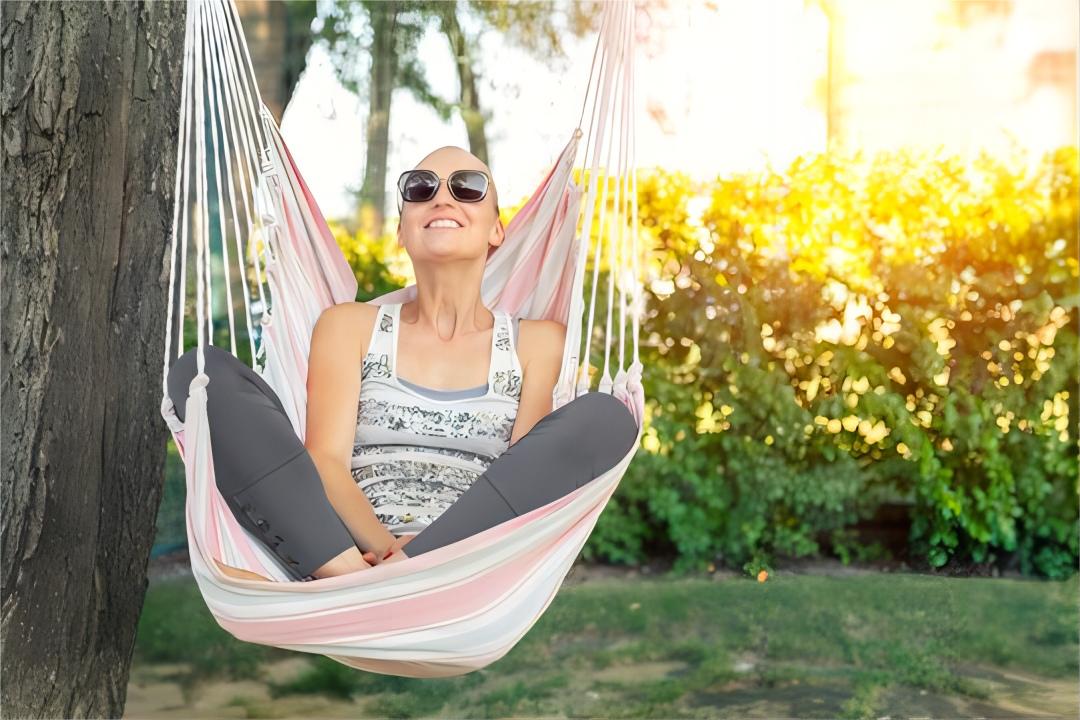
- Practice your makeup skills. Even if your hair doesn't grow out for a while, you can still look beautiful. You can touch up your features with makeup. Watch some makeup tutorials online and learn makeup techniques by interacting with online celebrities. Many women have shown that makeup makes them more confident and happy, so give it a try.
- Wear beautiful accessories. A variety of hats, jewelry, and earrings can enhance your appeal. If you had accessories you really liked before, now is the time to whitelist them and consider buying them. When you wear them and admire yourself in the mirror, you will be able to feel the pleasure.
- Switch your image. You can try to change your usual style of dressing. If you tend to be gentle and demure, you can try cute and playful clothes. If you are the type that leans towards vintage, you can try a neutral style of dressing. This will surely make you surprised and excited about yourself. You'll feel like you have countless possibilities.
- Take a trip with your family. Plan an elaborate trip with your family, whether it's a long or short one. You can enjoy amazing scenery, unique cuisine and learn about the people and customs. More importantly, share the joy with your family during the trip, which will surely ease your pain!
Final Thoughts
In conclusion, chemotherapy-induced hair loss can be a distressing side effect for cancer patients, but it is important to remember that it is often temporary and hair regrowth usually occurs after treatment has finished.
So, stay positive, stay strong, and know that you are not alone in this journey. With support from your loved ones and healthcare team, you can overcome any obstacle and come out stronger on the other side.
Images credit: Google, Pinterest, YouTube.
